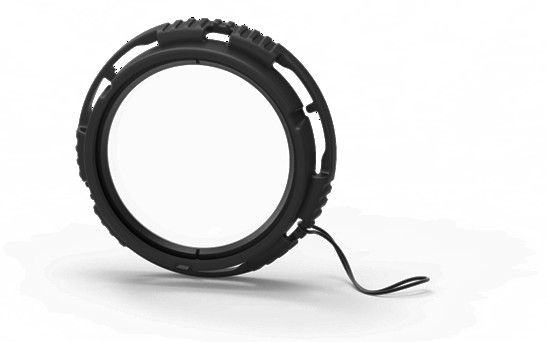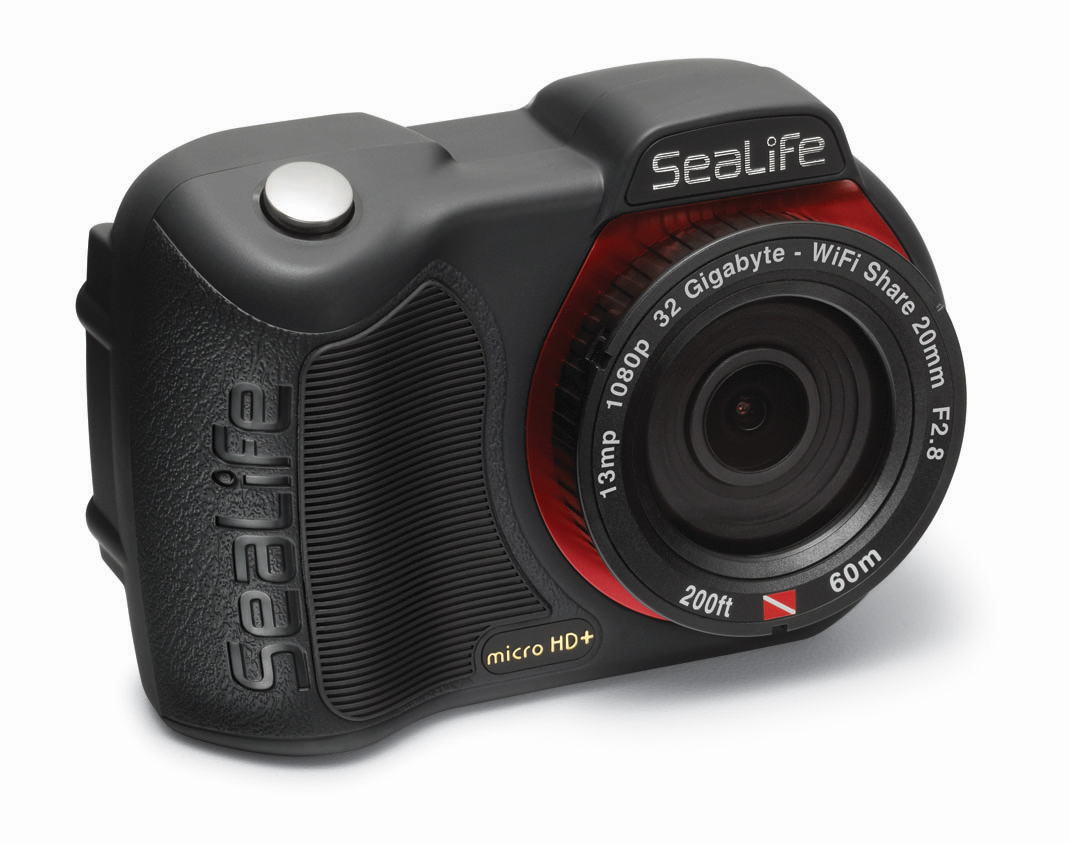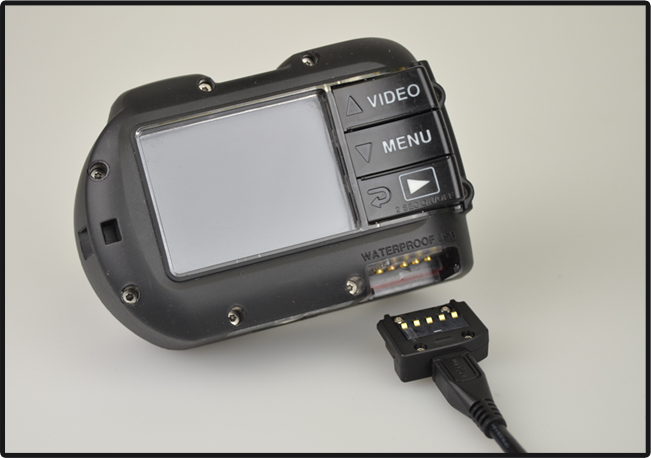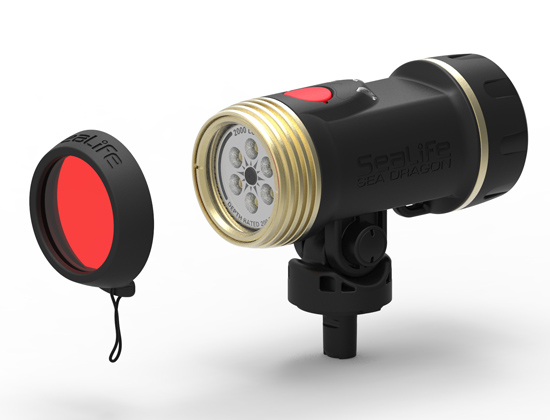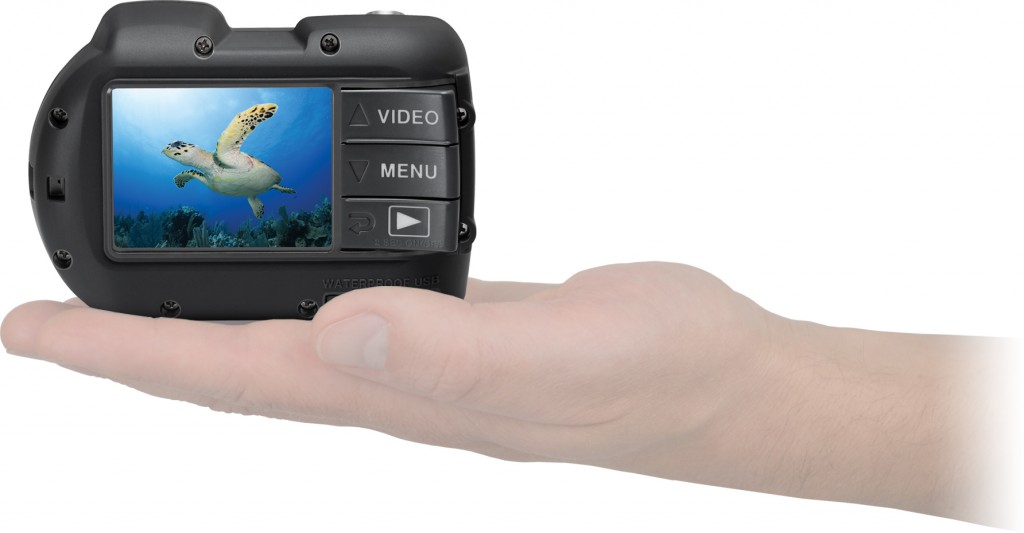News
Micro HD – the First Completely Sealed Action Camera
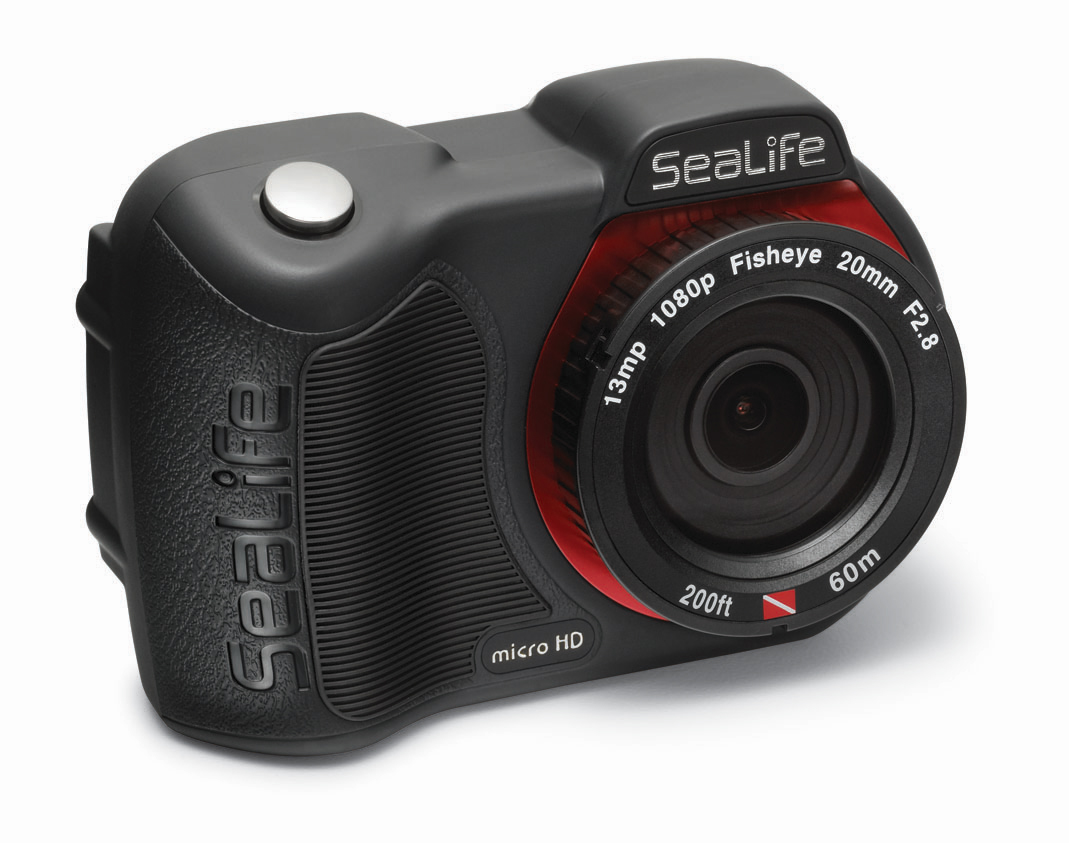
1080p full HD videos, 13 megapixel photos, a handy compact design, robust construction, 100% sealed and intuitive operation: the Micro HD from SeaLife is your best companion for all outdoor adventures!
You’ve heard it too often – “My camera is flooded”. With the new Micro HD from SeaLife, you don’t have to hear this anymore! With absolutely no openings in the housing, this completely sealed action camera guarantees no flooding. With no o-rings which need to be regularly replaced, a rubber coating, shock resistant and compact enough to hold on one hand, this is by far the most uncomplicated water and outdoor video and photo camera that there is.
Videos and Photos in just one Click
The Micro HD offers fast one-touch video recording. Bypassing the usual steps, the video key will start and stop videos immediately. While video is recording, pushing the shutter button will take a still picture without stopping the video. The Micro HD features full 1080p HD resolution video, capable of delivering stunning underwater footage of colourful sea creatures, reefs and other undersea landscapes.
The SeaLife Micro HD includes 16GB internal memory for hours of continuous recording and thousands of pictures. The Micro HD+ features 32GB internal memory. The internal high capacity li-ion battery provides over three hours of continuous operation with one charge.
The built-in wide angle lens of 140 degrees helps stabilise videos and capture large objects and wide scenes at close shooting distances. Capturing surprise encounters with sea creatures is made possible with a fast shutter response and sharp focus from one foot to infinity. The 10 X close up lens can be mounted underwater without any complications enabling you to get even closer to the object.
Download and Share – In a Flash
The Micro HD+ can wirelessly download and share images and video to iOS and Android devices through the free app “Action Cam HD.” The app offers uploading to YouTube, DropBox and other online services, perfect for backing up and sharing your photos and videos immediately after a dive or during your trip. The app also allows for wireless control of the Micro HD camera, providing a real time view of the LCD and the ability to capture and review photos and videos all on your smartphone or tablet.
Niklas Stoß, Product Manager: “My favourite feature: wireless download direct to smartphones or tablets. Finally, holidays without having to take a laptop. I can see my photos and videos immediately without even having to use a cable! Easier and quicker does not exist!”
Straightfoward Navigation and Simple to Use
Ease of use is one of the outstanding features of the Micro HD. Despite its small size, the rubber armored camera is easy to handle and control down to 200 feet underwater using only three wide “Piano Keys” even while wearing gloves. The Easy Setup Guide is a fast and intuitive new way to select land, dive, snorkel, or external light modes, allowing users to spend more time immersed in their environment rather than scrolling through a menu list.
The Micro HD features Land & Sea Mode colour correction, including four underwater modes with automatic colour adjustment. The Snorkel Mode is perfect for capturing vibrant natural colours at shallow depths, while the Dive Mode restores the red and yellow colours lost at deeper depths. Charging the battery or downloading pictures/video is as easy as plugging the USB cable into the camera’s waterproof USB port.
Easily Extendable
Since bright lighting is essential to revealing magnificent underwater colours, the Micro HD is expandable with the powerful new Sea Dragon underwater lights. “3-in-1” Sea Dragon LED lighting can be used as your photo, video and dive light. Weighing only 200g and extendable from 36cm to 96cm, the Aquapod Mini is ideal for taking close up shots without any risks and great for taking fun underwater selfies. The Red Filter can be used to take photos without startling the delicate marine life.
Technical Details at a Glance
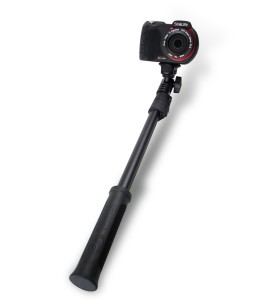 Full 1080p HD video at 30fps or 720p at 60fps
Full 1080p HD video at 30fps or 720p at 60fps- 13 megapixel still images for sharp, colourful pictures
- Picture in Video – Take still images while recording full HD video
- Permanently sealed – No waterproof door or O-rings to maintain, absolutely flood proof
- Wifi wirelessly download and share pictures/videos to your smart phone or tablet with free Action Cam HD app for preview, playback and camera settings
- 140° Fisheye Lens – Get close to your subject and still fit everything into the picture
- “Piano Key” controls for easy operation, with or without gloves
- Soft rubber grip design for sure grip – Fully rubber armored and shock resistant
- Large 2.4” TFT Colour LCD for easy on-camera viewing
- Easy Set-up mode with simple menu selections:
- Land Auto mode for action photos & videos above water
- Dive mode for underwater exposure control + colour correction while diving – no more blue pictures
- Snorkel mode for underwater exposure control and colour correction while snorkeling Ext Light mode – Colour, exposure and picture size settings optimised for taking underwater photos and videos with optional Sea Dragon LED light accessory
- Dual Ext Light mode – Colour, exposure and picture size settings optimised for taking underwater photos and videos with wider beam angle of two lights
- 16GB or 32GB internal memory – 32GB holds 8000+ still images or 6+ hours video
- Waterproof to 200ft/60m – Weight: 8.8 ounces/250 grams
- Dimensions: (10.7cm x 4.8cm x 7.4cm) – Ultra-compact design for easy handling and lightweight travel
- Fisheye instant focus lens from 12in/30cm to infinity
- Rapid Fire + Time Lapse Shooting shoots 10 frames/sec or continuous still images at set time intervals
- 2400 mAh internal lithium rechargeable battery for 3+ hours of operation
- Expandable with SeaLife accessories (one or two Sea Dragon Photo-Video-Dive Lights, Close-up Lens)
Sealife products are available from all authorised Subgear dealers.
RRP
- Micro HD £339
- Micro HD+ £379
- Aqua Pod mini £45
- Red Filter £25.90
- 10X Close Up Lens £36
Blogs
Northern Red Sea Reefs and Wrecks Trip Report, Part 3: The Mighty Thistlegorm

Jake Davies boards Ghazala Explorer for an unforgettable Red Sea diving experience…
Overnight, the wind picked up, making the planned morning dive a bit bumpy on the Zodiacs to the drop point on Thomas Reef. There, we would dive along the reef before descending through the canyon and then passing under the arch before ascending the wall with a gentle drift. The site provided great encounters with more pelagic species, including shoals of large barracuda, tuna, and bigeye trevally.
Once back on the boat, it was time to get everything tied down again as we would head back south. This time, with the wind behind us, heading to Ras Mohammed to dive Jackfish Alley for another great gentle drift wall dive before then heading up the coast towards the Gulf of Suez to moor up at the wreck of the Thistlegorm. This being the highlight wreck dive of the trip and for many onboard, including myself, it was the first time diving this iconic wreck. I had heard so much about the wreck from friends, and globally, this is a must on any diver’s list. Fortunately for us, there was only one other boat at the site, which was a rarity. A great briefing was delivered by Ahmed, who provided a detailed background about the wreck’s history along with all the required safety information as the currents and visibility at the site can be variable.

Kitting up, there was a lot of excitement on deck before entering the water and heading down the shoreline. Descending to the wreck, there was a light northerly current which reduced the visibility, making it feel more like the conditions that can be found off the Welsh coast. At 10m from the bottom, the outline of the wreck appeared as we reached the area of the wreck which had been bombed, as our mooring line was attached to part of the propeller shaft. Arriving on deck, instantly everywhere you looked there were many of the supplies which the ship was carrying, including Bren Carrier tanks and projectiles that instantly stood out.

We headed around the exterior, taking a look at the large propeller and guns mounted on deck before entering the wreck on the port side to take a look in the holds. It was incredible to see all the trucks, Norton 16H, and BSA motorcycles still perfectly stacked within, providing a real snapshot in time.

Overall, we had four dives on the Thistlegorm, where for all of the dives we were the only group in the water, and at times, there were just three of us on the whole wreck, which made it even more special, especially knowing that most days the wreck has hundreds of divers. Along with the history of the wreck, there was plenty of marine life on the wreck and around, from big green turtles to batfish, along with shoals of mackerel being hunted by trevally. Some unforgettable dives.

The final leg of the trip saw us cross back over the Suez Canal to the Gobal Islands where we planned to stay the night and do three dives at the Dolphin House for the potential of sharing the dive with dolphins. The site, which included a channel that was teeming with reef fish, especially large numbers of goatfish that swam in large shoals along the edge of the reef. These were nice relaxing dives to end the week. Unfortunately, the dolphins didn’t show up, which was okay as like all marine life they are difficult to predict and you can’t guarantee what’s going to be seen. With the last dive complete, we headed back to port for the final night where it was time to clean all the kit and pack before the departure flight the next day.

The whole week from start to finish on Ghazala Explorer was amazing; the boat had all the facilities you need for a comfortable week aboard. The crew were always there to help throughout the day and the chefs providing top quality food which was required after every dive. The itinerary providing some of the best diving with a nice mixture of wreck and reef dives. I would recommend the trip to anyone, whether it’s your first Red Sea liveaboard in the Red Sea or you’re revisiting. Hopefully, it’s not too long before I head back to explore more of the Red Sea onboard Ghazala Explorer.

To find out more about the Northern Red Sea reef and wrecks itineraries aboard Ghazala Explorer, or to book, contact Scuba Travel now:
Email: dive@scubatravel.com
Tel: +44 (0)1483 411590
Photos: Jake Davies / Avalon.Red
Blogs
Northern Red Sea Reefs and Wrecks Trip Report, Part 2: Wall to Wall Wrecks

Jake Davies boards Ghazala Explorer for an unforgettable Red Sea diving experience…
The second day’s diving was a day full of wreck diving at Abu Nuhas, which included the Chrisoula K, Carnatic, and Ghiannis D. The first dive of the day was onto the Chrisoula K, also known as the wreck of tiles. The 98m vessel remains largely intact where she was loaded with tiles which can be seen throughout the hold. The stern sits at 26m and the bow just below the surface. One of the highlights of the wreck is heading inside and seeing the workroom where the machinery used for cutting the tiles are perfectly intact. The bow provided some relaxing scenery as the bright sunlight highlighted the colours of the soft coral reef and the many reef fish.

Following breakfast, we then headed to the next wreck, which was the Carnatic. The Carnatic is an 89.9m sail steamer vessel that was built in Britain back in 1862. She ran aground on the reef back in 1869 and remains at 27m. At the time, she was carrying a range of items, including 40,000 sterling in gold. An impressive wreck where much of the superstructure remains, and the two large masts lay on the seafloor. The wooden ribs of the hull provide structures for lots of soft corals, and into the stern section, the light beams through, bouncing off the large shoals of glass fish that can be found using the structure as shelter from the larger predators that are found outside of the wreck.

The final wreck at Abu Nuhas was the Ghiannis D, originally called ‘Shoyo Maru,’ which was 99.5m long and built in Japan back in 1969 before becoming a Greek-registered cargo ship in 1980. The ship then ran aground on the reef on April 19th, 1983, and now sits at the bottom at a depth of 27m. Heading down the line, the stern of the ship remains in good condition compared to the rest of the hull. The highlight of the wreck, though, is heading into the stern section and down the flights of stairs to enter the engine room, which remains in good condition and is definitely worth exploring. After exploring the interior section of the ship, we then headed over to see the rest of the superstructure, where it’s particularly interesting to see the large table corals that have grown at the bow relatively quickly considering the date the ship sank. After surfacing and enjoying some afternoon snacks, we made sure everything was strapped down and secured as we would be heading north and crossing the Gulf of Suez, where the winds were still creating plenty of chop.

The next morning, it was a short hop to Ras Mohammed Nature Reserve for the next couple of days of diving. The 6am wake-up call came along with the briefing for the first site we would be diving, which was Shark & Yolanda. The low current conditions allowed us to start the dive at Anemone City, where we would drift along the steep, coral-filled wall. These dives involved drifts, as mooring in Ras Mohammed wasn’t allowed to protect the reefs. As a dive site, Shark & Yolanda is well-known and historically had a lot of sharks, but unfortunately not so many in recent years, especially not so early in the season. However, there was always a chance when looking out into the blue.

The gentle drift took us along the steep walls of the site, with plenty of anemone fish to be seen and a huge variety of corals. It wasn’t long into the dive before we were accompanied by a hawksbill turtle, who drifted with us between the two atolls before parting ways. Between the two reefs, the shallow patch with parts of coral heads surrounded by sand provided the chance to see a few blue-spotted stingrays that were mainly resting underneath the corals and are always a pleasure to see. With this being the morning dive, the early sunlight lit up the walls, providing tranquil moments. Looking out into the blue, there was very little to be seen, but a small shoal of batfish shimmering underneath the sunlight was a moment to capture as we watched them swim by as they watched us.

Towards the end of the dive, we stopped at the wreck of the Jolanda where the seafloor was scattered with toilets from the containers it was carrying. This provided a unique site to make a safety stop, which was also accompanied by a large barracuda slowly swimming by, along with a hawksbill turtle calmly swimming over the reef as the sun rays danced in the distance.
For the next dive, we headed north to the Strait of Tiran to explore the reefs situated between Tiran Island and Sharm El Sheik, which were named after the British divers who had found them. We started on Jackson before heading to Gordons Reef, where we also did the night dive. All the atolls at these sites provided stunning, bustling coral reefs close to the surface and steep walls to swim along, which always provided the opportunity to keep an eye out for some of the larger species that can be seen in the blue. Midwater around Jackson Reef was filled with red-toothed triggerfish and shoals of banner fish, which at times were so dense that you couldn’t see into the blue. Moments went by peacefully as we enjoyed the slow drift above the reef, watching these shoals swim around under the mid-afternoon sun.

The night dive at Gordon’s Reef was mainly among the stacks of corals surrounded by sand, which was great to explore under the darkness. After some time circling the corals, we came across what we were really hoping to find, and that was an octopus hunting on the reef. We spent the majority of the dive just watching it crawl among the reef, blending into its changing surroundings through changes in colour and skin texture. It’s always so fascinating and captivating to watch these incredibly intelligent animals, in awe of their ability to carry out these physical changes to perfectly blend into the reef. Before we knew it, it was time to head back to the boat to enjoy a well-deserved tasty dinner prepared by the talented chefs onboard.
Check in for the 3rd and final part of this series from Jake tomorrow!
To find out more about the Northern Red Sea reef and wrecks itineraries aboard Ghazala Explorer, or to book, contact Scuba Travel now:
Email: dive@scubatravel.com
Tel: +44 (0)1483 411590
Photos: Jake Davies / Avalon.Red
-

 News3 months ago
News3 months agoHone your underwater photography skills with Alphamarine Photography at Red Sea Diving Safari in March
-

 News3 months ago
News3 months agoCapturing Critters in Lembeh Underwater Photography Workshop 2024: Event Roundup
-

 Marine Life & Conservation Blogs2 months ago
Marine Life & Conservation Blogs2 months agoCreature Feature: Swell Sharks
-

 Blogs2 months ago
Blogs2 months agoMurex Resorts: Passport to Paradise!
-

 Blogs2 months ago
Blogs2 months agoDiver Discovering Whale Skeletons Beneath Ice Judged World’s Best Underwater Photograph
-

 Gear Reviews3 months ago
Gear Reviews3 months agoGear Review: Oceanic+ Dive Housing for iPhone
-

 Marine Life & Conservation2 months ago
Marine Life & Conservation2 months agoSave the Manatee Club launches brand new webcams at Silver Springs State Park, Florida
-

 News3 months ago
News3 months agoWorld’s Best Underwater Photographers Unveil Breathtaking Images at World Shootout 2023


